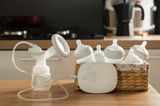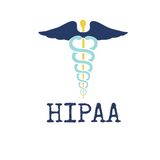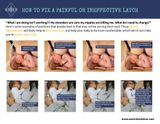So I talk a lot about preparing for Breastfeeding and Chestfeeding by learning what to expect, what to do and when to ask for help. In this article I will spend a little time focusing on what physcal items one might want when preparing to breastfeed or chestfeed. I will break up the list into must-haves for everyone, must-haves when challenges arise and must-haves for not be making a full milk supply.
I will say for the average breastfeeding/chestfeeding journey you may need nothing at all but for many who have some bumps in the road having the right accessories can make the journey smoother and more comfortable for new parents. Whether you're a new parent or you're just shopping for one, this blog will walk you through some essentials to have on hand.
Education: Your First Tool
Before diving into the physical products, remember: your knowledge is the most crucial asset. Equip yourself with information. I have an online course here to help: Basics of Breastfeeding & Chestfeeding. Since this is likely the most important key to your success, I try to keep my course affordable but I do offer a slidding scale for financial need. Just send me an email. Understand the breastfeeding process, recognize the signs of a proper latch, and familiarize yourself with potential challenges will empower you to be sucessful. While some of these items do have affilate links. I am always very honest about how needed I really think they are, their upsides and downsides and I appreciate your willingess to support my small business. Now, let's move onto the tangible must-haves.
Must-haves for everyone
1. Breast Pads
Leaking is a common occurrence for many new parents, especially in the early days of breastfeeding/chestfeeding. Not everyone leaks and it isn't an indcation of how much milk you make. Some people only leak in the first few weeks or months another will leak for the entirety of their breastfeeding/chestfeeding experience. If you do leak it can be nice to have absorbent pads to prevent constantly being covered in sticky wetness. Remeber human milk is very high in sugar and if left at room temperature does turn to cheese so...you know a little easier to keep on top of it than try and clean up later.
Wool Breast Pads
They are a fantastic natural option. They keep your breasts/chest tissue warm in cooler temperatures, which can prevent vasospasms, more on vasospasms here. They also have natural antibacterial properties because of this they do not need to be washed as often as you might think so just a few can be all you need. You might think that it sounds scratchy but they are made from super soft wool and everyone I know who's had wool pads LOVES them. Try these Wool Breast Pads.
Cotton Breast Pads
These are breathable and soft against the skin. They are also absorbent and can be washed and reused. They are generally considered much more comfortable than disposable pads. They do need to be changed out often so you will likely need quite a few but they can get thrown in the wash with the many loads of baby laundry you will likely already be doing. Check out these Cotton and bamboo Breast Pads.
2. Comfortable Nursing Bra/top
A nursing bra is designed to offer support while ensuring easy access for breastfeeding. You may want a comfy one for around the house and then one that fits under more clothing options for going out. You can also get ones that double as a pumping bra so you don't have to take off your shirt and change your bra for pumping. Having said that, if you are still pregnant you will likely just want to pick up a comfy one for the time being as it is very unpredictable how your chest and breast/chest tissue will change when your full milk supply comes in. Its better to wait till after thats happened to buy any other nursing bra options. I am on the hunt for one that may feel less bra like and is more affirming for those who don't indentify as female and feel less comfortable in a bra but I have included one that I found that is less feminine.
Comfy nursing bra
These ones are pretty flexible in sizing so will likely fit in late pregnancy and during lactation. Invest in a comfortable one to help you nurse without fully undressing, like this highly-rated Nursing Bra.
Pumping bra and nursing bra combo
These combos are great for anyone pumping regularly. Pumping is a long list of tiny tasks to prepare for and clean up from. Remove the task of changing bras all day log with one of these transformative nursing/pumping bras.
More masculine tank top
This tank top in outward appearance is less feminine but does include the support and ease of access that many nursing parents desire.
3. Breast Pump & Pumping Bra
If you plan on pumping, either to supplement breastfeeding or to store for later, a good breast pump is essential.
Breast Pump
I think this is going to end up being its whole own blog as there are so many options and there are different pumps that are better for different situations but this the Spectra S1 has been around for a long time and it is a work horse. It will do the job well if you need to pump to increase supply, exclusive pump, pump only at work or just pump occasionally. Please note that your insurance company should provide you with a free pump. Some are not very good quality but many give you options and allow you to pay a little bit to upgrade to a better pump. A dependable and efficient pump can make all the difference.
Pumping Bra
If you don't already have a nursing bra that can also be a pumping bra, this is a game-changer! It allows you to pump hands-free, giving you the flexibility to multitask. Saving your wrists from increasing likelyhood of getting carpal tunnel which is very common postpartum. Look at this Pumping Bra for convenience.
4. Nipple Cream
Breastfeeding/chestfeeding, in the beginning, can cause soreness, if it passes quickly theres no reason to think there's a larger problem. A quality nipple cream can soothe and heal. Coconut oil can work well for this. But lots of people like to have some nipple cream. This Nipple Cream is organic and has naturally antifungal and antibiotic oils which and safe for both parent and baby, no need to wipe off after use.
5. Human Milk Storage Bags or Jars
Milk Storage Bags
To store your pumped milk safely, you'll need storage bags or jars. Ensure they're sterile and designed for human milk. These Milk Storage Bags are pre-sterilized and leak-proof and BPA free.
Milk storage Jars
While most parents like to use bags to store milk as they are cheap and save a lot of space in the freezer. There are some advantages to using glass jars. Plastic is lipofilic so the fat clings to the inside of the bag. Its much easier to get the fat in the milk out of the storage container and into the bottle with a glass jar. They will also not leach any plastic chemicals into your milk. These Milk Storage Jars are more practical for those who never plan to have a large stash of milk in the freezer.
6. Large Non-Spill Water Bottle
Breastfeeding/chestfeeding can make you thirsty! Staying hydrated is vital for maintaining a healthy milk supply and recovering from birth. This Non-Spill Water Bottle is a favorite for its convenience and size. It is also compatible with some great toddler water bottles so all your tops will match all the bottoms and you won't spend ages trying to find the right one.
7. One-Handed Snacks
For those long feeding sessions, have some nutritious snacks handy. Snacks that can be eaten with one hand are ideal. Think granola bars, dried fruits, or nuts. In the past clients of mine have found all kind of favorites from a plate of bacon (making milk make you HUNGRY) to these hand oatmeal bars. Here's a selection of One-Handed Snacks (affiliate link) that moms swear by.
Or my personal favorite. These nut filled granola bars are pretty good for you but kinda feel like eating a candy bar.
Must-haves for challenges in lactation
Sometimes, despite our best preparations, challenges arise. Here are a couple of products to have on hand, just in case or order over night if you need them:
Silver Nursing Cups
Made of pure silver, these nursing cups have healing and antibacterial properties, aiding with sore or cracked nipples, they keep a little milk on your nipple as well which has tons of healing goodness. Clients and providers LOVE these! Invest in these Silverettes Nursing Cups as a preventative measure.
Hydrogel Pads
For inflamed or sore nipples, hydrogel pads provide instant relief and faster healing. These are not cheap but immediate relief I have seen on clients face when they put them on means I will still regularly recommend them. Check out these soothing Hydrogel Pads.
Bottles
If direct breastfeeding or chestfeeding isn't possible, there are lots of options of other ways to feed your baby. For many a bottle is the easiest option. The Evenflo Balance, evenflo, dr browns narrow mouth are the bottles I recommend to my clients. Usually with small babies we don't have too much problems with "nipple confusion" but there is sometimes an issue with flow rate preferences. I have a bunch of videos on instagram about how I recommend bottle feeding to help mitigate some of this possibility. (The links to these bottles are not affilate links as my certifying body prohibits profiting from the sales of bottles)
Bottle Brushes
Cleaning bottles thoroughly is essential to ensure your baby's health and safety. Milk residues can harbor bacteria, and regular sponges might not reach the bottle's nooks and crannies. A bottle brush, with its elongated handle and bristled end, is designed to clean bottles efficiently. In my years as a doula I spent many hours cleaning bottles with many different set ups. This Bottle Brush is by far my favorite with its durable sponge and nipple brush attachment. This is one of those little things that you actually have to use all the time and its worth getting a decent option.
Bottle Drying Rack
After cleaning, it’s equally vital to let the bottles dry properly to prevent mold or bacteria growth. A bottle drying rack provides an organized, open-air system to dry all parts of bottles and pumps. This Bottle Drying Rack is popular among parents for its design and efficiency.
Sterilizer
Preemies and sick babies are more at risk of pathogens and need all their feeding equipment to be very clean. Using a sterilizer ensures these items are safe for your baby. Bottles and pump parts must be washed with soapy water first to remove oils from the milk before using a sterilizer. Modern sterilizers can eliminate 99.9% of harmful bacteria in just a few minutes. Consider this highly recommended Sterilizer for peace of mind. Also keep in mind that sterilzing can be done with boiling water or many dishwashers have a sterile setting.
Bottle Warmer
If you store human milk in the fridge or freezer, a bottle warmer can be your best friend when you are holding a fussy baby who doesn't like cold milk. There isn't anything wrong about giving milk cold but some babies will not have it. This bottle warms the milk evenly and safely, you don't have to fill with water every time and you can set it and get busy soothing that hungry baby and it will turn off when its ready. This Bottle Warmer not only warms milk but can also sterilize small items.
Must-haves if you likely won't have a full supply
Breastfeeding is a deeply individual experience, and it’s not uncommon for mothers to have concerns about their milk supply. While many parents produce enough milk to meet their baby's needs, certain factors might affect one's milk production capacity. Recognizing potential challenges and proactively addressing them can be instrumental in fostering a fulfilling breastfeeding experience.
Reasons Some Mothers May Not Produce Enough Milk
- Previous Experience of Low Supply: A parent who had low milk supply with a previous child might experience it again, although it's not always the case.
- Surgery or Injury to the Breast/chest: Any surgery on the breast/chest, like biopsies, breast augmentations, reductions, or injuries, can impact milk production. This depends on the surgery type, the techniques used, and whether milk ducts were affected.
- Being the Non-Gestational Parent: Non-gestational parents, such as in the case of LGBTQ+ families, adoptive or parents through surogacy might want to breastfeed or chestfeed. While inducing lactation is possible and I support families with this regularly, the milk supply might not be as abundant as in a recently pregnant parent.
Products That Can Assist With Milk Supply
Herbal Supplements
Nature has provided a range of herbs believed to enhance milk production, known as galactagogues. However, always consult with a healthcare professional before starting any herbal supplements. There are just too many options for me to provide links to each herb here but I have a blog all about how to increase supply and theres a whole section on herbal galactagogues.
At-Breast Supplementer
This innovative tool allows your baby to receive supplementary milk (either expressed human milk, donor milk or formula) while breastfeeding/chestfeeding, ensuring they get adequate nutrition while stimulating your body to produce milk, learning how to latch and gain practice with feeding at the brest/chest. The supplementer consists of a container for the supplemental milk and thin tubes that deliver the milk to your baby while at the breast. This At-Breast Supplementer is a favorite among parents who need them as a short term tool to get baby feeding at the breast/chest, they don't last forever. If you know your whole journey you will be using supplementation, this SNS will likely be a better option.
Medical Tape
This medical tape can be helpful if you are using and at-breast supplemetner to help hold in place weather on your finger or on your breast/chest. The trick is that the tissue around the nipple can be sensitive so its good to have tape that isn't too sticky but alternatly milk is wet and greesy so it can easily cause the tape to slip off.
Photo of tape and the packaging it is sold in
Incorporating these tools into your breastfeeding/chestfeeding and feeding routine can simplify the process, ensuring your baby gets the nutrition they need in the safest way possible. Remember, every baby and every parent is unique; what works for one might not work for another. The key is to find what aligns with your needs and provides the best comfort and convenience for you and your baby.
In conclusion, while no amount of things will ensure that you have a stress free breastfeeding/chestfeeding jouney, having the right tools can make things a little easier. Keep these items on your shopping list or put them on your registery and you'll be well-prepared for this beautiful phase of parenthood. Happy breastfeeding or chestfeeding!
[Note: The above Amazon links are affiliate links, meaning I earn a small commission from your purchase, at no extra cost to you. Your support keeps this blog running. Thank you!]





























